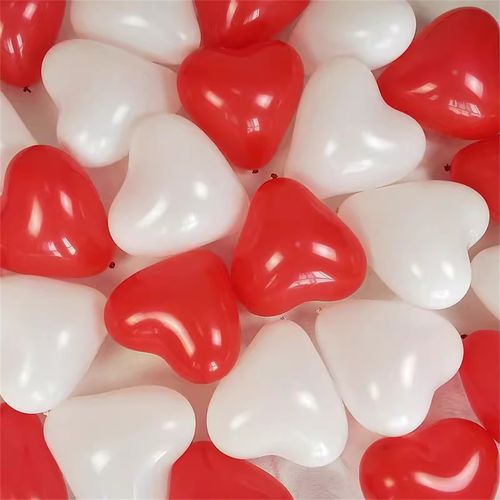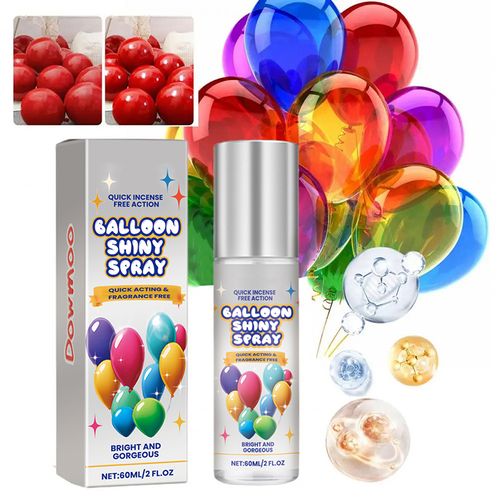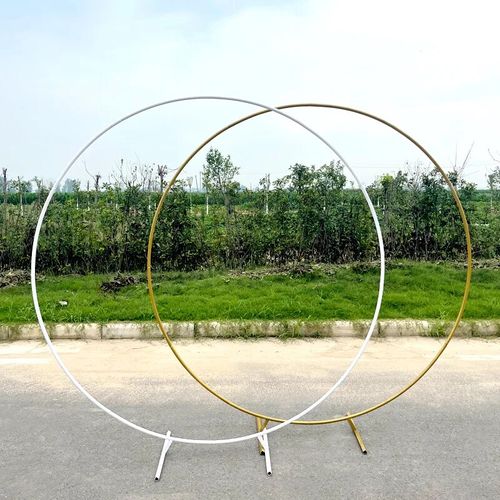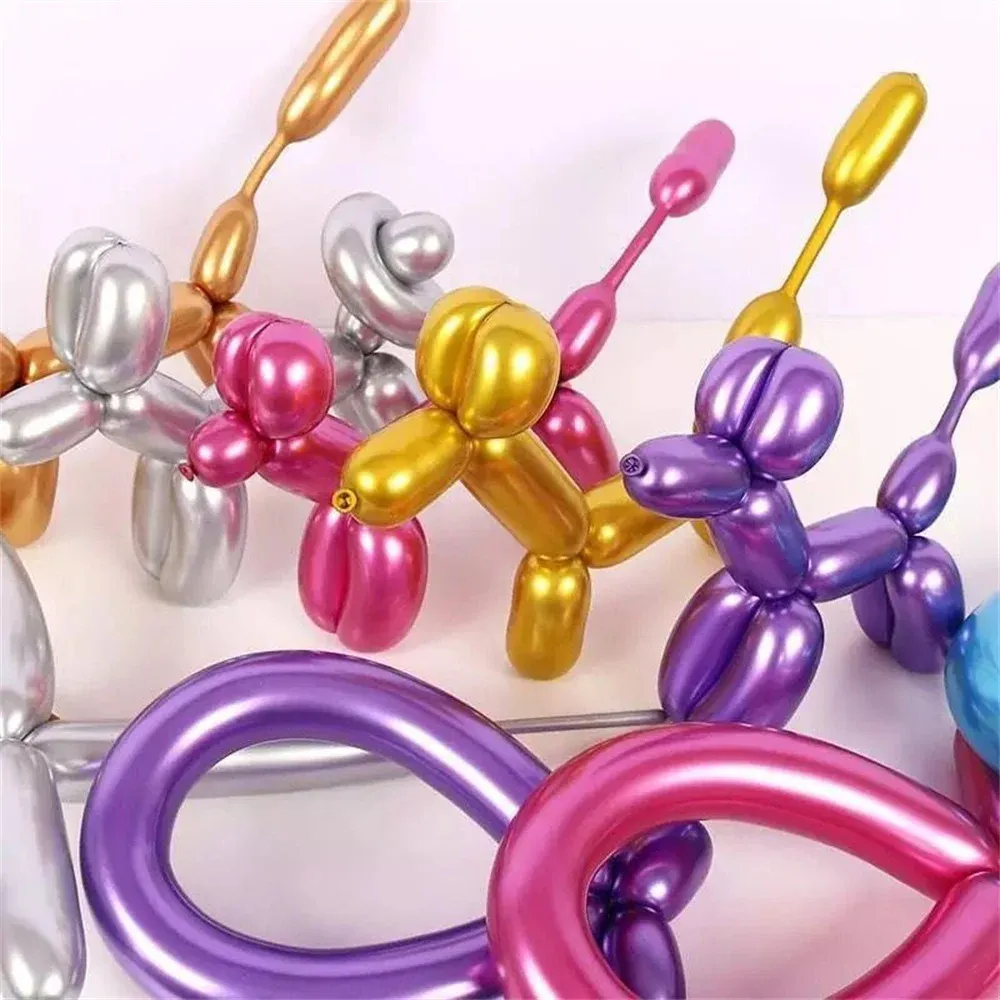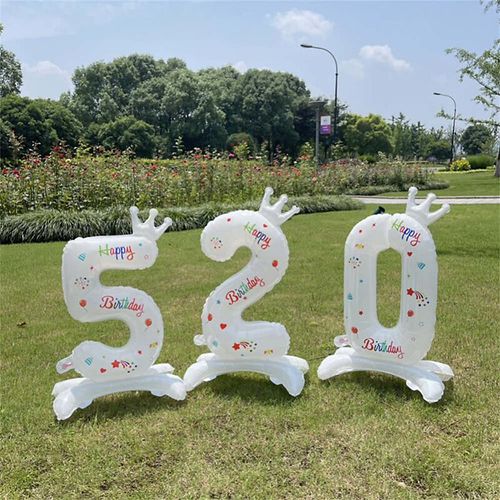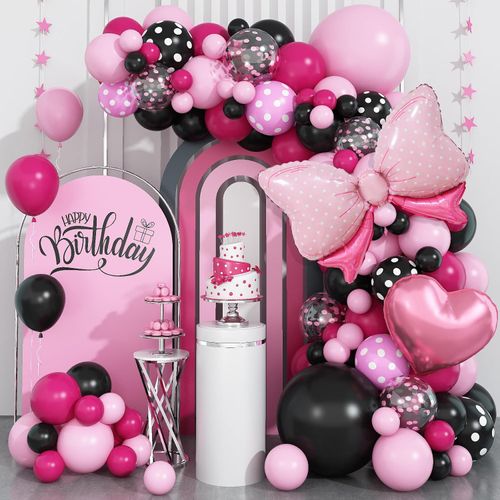Balloon Inflation Tips: The Complete Guide to Perfect Balloon Preparation
Whether you're decorating for a birthday party, wedding, corporate event, or any special occasion, properly inflated balloons make all the difference in creating a professional and polished look. This comprehensive guide covers everything you need to know about balloon inflation, from basic techniques to advanced tips that will help you achieve perfect results every time.
Understanding Balloon Basics
Before diving into inflation techniques, it's important to understand the fundamentals of balloons and how they work.
Balloon Materials and Their Properties
Different balloon materials respond differently to inflation:
Latex Balloons:
- Made from natural rubber harvested from trees
- Highly elastic and stretchable
- Porous at microscopic level (allows slow gas escape)
- Available in various thicknesses and qualities
- Biodegradable over time (typically 6 months to 4 years)
Foil/Mylar Balloons:
- Constructed from metallized nylon or polyester film
- Limited elasticity compared to latex
- Non-porous (better gas retention)
- Heat-sealed edges
- Not biodegradable
Specialty Balloons:
- Bubble balloons: Clear, round, and highly durable
- Chloroprene balloons: Superior elasticity and longevity
- Vinyl balloons: Extremely durable for permanent installations
- Microfoil balloons: Thinner foil with unique properties
The Science Behind Balloon Inflation
Understanding the physics of balloon inflation helps achieve better results:
- Elasticity: Balloons stretch when internal pressure exceeds external pressure
- Pressure Equilibrium: Balloons naturally seek balance between internal and external pressure
- Temperature Effects: Gases expand when heated and contract when cooled
- Permeability: Gas molecules gradually escape through microscopic pores in latex
- Oxidation: Latex degradation occurs when exposed to air, sunlight, and pollutants
Essential Inflation Tools and Supplies
Having the right equipment makes balloon inflation faster, easier, and more consistent.
Manual Inflation Tools
Hand Pumps:
- Dual-action pumps (inflate on push and pull)
- Single-action pumps (inflate on push only)
- Foot pumps (operated by stepping)
- Advantages: Portable, no power needed, inexpensive
- Best for: Small to medium events, air-filled decorations
Balloon Sizers:
- Templates with holes of specific diameters
- Ensures consistent balloon sizes
- Available in various measurement systems
- Essential for professional-looking installations
- Can be purchased or DIY with cardboard
Tying Tools:
- Plastic devices that assist with balloon knotting
- Particularly helpful for those with hand strength issues
- Increases efficiency for large quantities
- Reduces hand fatigue and strain
Electric Inflation Equipment
Electric Balloon Pumps:
- Small compressor units specifically for balloons
- Variable speed options on premium models
- Continuous operation capability
- Advantages: Fast, consistent, reduces fatigue
- Best for: Medium to large events, professional decorators
Helium Tanks:
- Disposable cylinders (for small events)
- Refillable tanks (for larger events or businesses)
- Regulators to control gas flow
- Pressure gauges to monitor remaining helium
- Various nozzle attachments for different balloon types
Automatic Balloon Inflators:
- Programmable units that measure precise gas amounts
- Some can count balloons inflated
- High-end models include sizing features
- Primarily used by professional decorators
- Significant time-saver for large installations
Inflation Accessories
Balloon Valves and Clips:
- Self-sealing valves for foil balloons
- Quick-release clips for latex balloons
- Button clips for special applications
- Balloon discs for creating balloon bases
- Cup and stick assemblies for table displays
Inflation Nozzles:
- Standard nozzles for regular balloons
- Foil balloon nozzles (flatter design)
- Needle nozzles for special applications
- Quick-connect systems for efficiency
- Dual inflators for balloon-in-balloon designs
Treatment Products:
- Hi-Float liquid (extends helium float time)
- Balloon shine for enhanced appearance
- Anti-static spray to prevent sticking
- Balloon cleaning wipes for handling marks
- Specialty adhesives for balloon construction
Air Inflation Techniques
Air-filled balloons are economical, versatile, and perfect for many decorative applications.
Basic Air Inflation Methods
Mouth Inflation (Not Recommended):
- Introduces moisture and bacteria into balloons
- Inconsistent sizing
- Physically taxing for multiple balloons
- Can cause dizziness or lightheadedness
- Only suitable for emergencies or single balloons
Hand Pump Technique:
- Position balloon securely over nozzle
- Hold balloon neck near nozzle to prevent air escape
- Pump with steady, consistent motion
- Monitor size visually or with sizer
- Remove carefully to minimize air loss
Electric Pump Method:
- Select appropriate speed setting
- Secure balloon firmly over nozzle
- Support balloon as it inflates
- Use balloon sizer for consistency
- Develop rhythm for efficiency
Achieving Consistent Sizing
Consistent balloon sizing is crucial for professional-looking decorations:
Using Balloon Sizers:
- Inflate balloon until it just passes through the desired hole size
- Remove from pump while holding neck closed
- Check from multiple angles to ensure proper inflation
- Tie immediately to prevent air loss
Visual Sizing Techniques:
- Create a reference balloon of perfect size
- Compare subsequent balloons to reference
- Use landmarks in your workspace for comparison
- Develop eye for subtle size differences
- Check roundness from multiple angles
Measurement Methods:
- Use measuring tape around balloon circumference
- Create cardboard templates for different sizes
- Mark inflation levels on pump or wall
- Count pump strokes for consistency (varies by pump)
- Use premeasured containers as visual guides
Proper Tying Techniques
Secure balloon closure prevents premature deflation:
Basic Knot Method:
- Stretch neck of balloon 3-4 inches
- Wrap around index and middle fingers twice
- Roll fingers forward and pull balloon end through loop
- Pull tight to secure knot
- Trim excess if necessary
Balloon Tying Tool Method:
- Insert balloon neck into tool opening
- Stretch and wrap around prongs
- Push balloon through created loop
- Pull tight to secure knot
- Practice for speed and efficiency
Quick-Tie Technique (For Professionals):
- Hold balloon neck between thumb and forefinger
- Stretch and loop around finger in one motion
- Roll finger forward while maintaining tension
- Pull end through created loop
- Can be done in under 2 seconds with practice
Air-Filled Balloon Longevity
Air-filled balloons can last significantly longer than helium-filled ones:
Expected Lifespan:
- Standard latex (air-filled): 1-3 weeks indoors
- High-quality latex (air-filled): 2-4 weeks indoors
- Foil balloons (air-filled): 2+ months
- Treated specialty balloons: Up to 6 months
Extending Air-Filled Balloon Life:
- Store in consistent temperature environment
- Keep away from direct sunlight
- Avoid exposure to sharp objects
- Apply anti-oxidant spray for latex
- Keep away from heating/cooling vents
Helium Inflation Techniques
Helium creates the magical floating effect that makes balloons special for many occasions.
Helium Safety Precautions
Proper safety measures are essential when working with helium:
Tank Handling:
- Always secure tanks in upright position
- Use proper tank cart for moving
- Never drop or impact tanks
- Store away from heat sources
- Follow local regulations for storage
Operational Safety:
- Open valve slowly and carefully
- Never inhale helium (can cause asphyxiation)
- Use in well-ventilated areas
- Keep face away from tank valve
- Close valve completely when finished
Emergency Procedures:
- Know symptoms of helium exposure (dizziness, confusion)
- Have emergency contact information available
- Know location of nearest exit
- Understand proper tank shutdown procedure
- Have fire extinguisher accessible
Proper Helium Tank Operation
Correct tank usage ensures safety and efficiency:
Setting Up:
- Remove protective cap from tank valve
- Attach regulator securely
- Connect appropriate inflation nozzle
- Ensure all connections are tight
- Place tank in stable position
Controlling Flow:
- Open main valve slowly (1-2 turns counterclockwise)
- Adjust regulator to appropriate pressure
- Test flow before first balloon
- Maintain consistent pressure for uniform results
- Close main valve completely when finished
Tank Maintenance:
- Keep valve clean and free of debris
- Check for leaks with soapy water solution
- Never force connections
- Replace damaged regulators immediately
- Follow supplier guidelines for returns
Achieving Optimal Float
Perfect helium fill creates balloons that float properly without overinflation:
Standard Latex Balloons:
- Fill until balloon has slight pear shape
- Should float with gentle upward pull
- Avoid stretching balloon to maximum capacity
- Account for altitude effects on float performance
- Consider balloon weight (larger balloons need more helium)
Foil Balloons:
- Fill until wrinkles disappear and balloon feels firm
- Stop when balloon begins to expand outward
- Listen for pitch change in helium flow
- Allow for self-sealing valve operation
- Check float before releasing
Specialty Applications:
- Weighted helium balloons: Calculate lift capacity
- Ceiling installations: Adjust for desired height
- Outdoor use: Slightly underinflate (allows for expansion)
- High altitude locations: Compensate for reduced air pressure
- Long-duration events: Account for gradual helium loss
Hi-Float Application
Hi-Float is a special solution that extends helium balloon float time:
Application Process:
- Insert Hi-Float applicator into uninflated balloon
- Squeeze appropriate amount into balloon (follow product guidelines)
- Distribute solution by massaging balloon exterior
- Allow 30-60 seconds for initial setting
- Inflate with helium as normal
Quantity Guidelines:
- 11" balloons: 5-6 pumps of solution
- 16" balloons: 8-10 pumps of solution
- 24" balloons: 15-20 pumps of solution
- Adjust based on desired float time
- More solution increases longevity but adds weight
Effectiveness Factors:
- Properly applied Hi-Float extends float time 10-25 times
- Works best in moderate humidity (40-60%)
- Less effective in extremely dry conditions
- Results vary by balloon quality
- Allow treated balloons to "cure" 1 hour for best results
Specialty Inflation Techniques
Beyond basic inflation, specialty techniques create unique balloon effects.
Double-Stuffing Method
Creating balloons within balloons for special effects:
Basic Double-Stuffing:
- Inflate smaller balloon with air or helium
- Stretch opening of larger uninflated balloon
- Insert inflated balloon completely
- Inflate outer balloon with helium
- Tie securely
Advanced Applications:
- Contrast colors for visual impact
- Use clear outer balloons to showcase inner designs
- Create floating centerpieces with weighted inner balloons
- Combine different balloon types (latex inside foil)
- Add confetti between layers for movement
Balloon Sizing for Specific Applications
Different decorative elements require specific sizing approaches:
Balloon Arches:
- Consistent sizing crucial for structural integrity
- Typically use 9-11" balloons at 90% inflation
- Adjust size based on desired arch fullness
- Create size template specific to each project
- Account for connecting method in sizing
Balloon Garlands:
- Varied sizes create organic appearance
- Primary balloons (9-11") form structure
- Accent balloons (5") fill gaps
- Feature balloons (16"+) create focal points
- Slightly underinflate for easier attachment
Balloon Walls:
- Uniform sizing creates clean appearance
- Typically 11" balloons at 80-90% inflation
- Consistent inflation pressure essential
- Account for grid structure in sizing
- Consider viewing distance when determining size
Balloon Sculptures:
- Precise sizing critical for structural designs
- Often requires specialized balloon shapes
- Different sizes for different structural elements
- May require extremely specific inflation levels
- Often uses qualitative assessment rather than measurement
Confetti and Special Effect Balloons
Creating eye-catching specialty balloons:
Confetti-Filled Clear Balloons:
- Use funnel to insert confetti into uninflated balloon
- Distribute confetti evenly inside balloon
- Inflate slowly to avoid confetti clumping
- Use anti-static spray if confetti sticks to sides
- Seal immediately to prevent confetti escape
Glow-in-the-Dark Effects:
- Insert LED light into balloon before inflation
- Use clear or translucent balloons for best effect
- Activate light before sealing balloon
- Consider battery life for event duration
- Test effect in lighting conditions similar to event
Bubble Balloons:
- Use special nozzle designed for bubble balloons
- Inflate slowly to maintain perfect spherical shape
- Watch for subtle change in resistance
- Stop inflation before balloon feels tight
- Seal with specialized bubble balloon clip
Troubleshooting Common Inflation Problems
Even experienced decorators encounter inflation challenges. Here's how to address them:
Balloon Won't Inflate Properly
Possible Causes and Solutions:
Defective Balloon:
- Check for small holes or tears
- Look for thin spots in latex
- Verify balloon is not expired (latex degrades over time)
- Ensure balloon hasn't been pre-stretched
- Replace with new balloon if defective
Equipment Issues:
- Check pump for proper operation
- Ensure nozzle is clear of obstructions
- Verify helium tank has sufficient pressure
- Check for leaks in inflation system
- Clean equipment if necessary
Technique Problems:
- Ensure balloon is properly seated on nozzle
- Check that balloon neck isn't twisted
- Hold balloon securely during inflation
- Adjust inflation pressure if too low
- Try different inflation angle
Premature Deflation
Identifying and Solving Deflation Issues:
Latex Balloons:
- Check for microscopic holes (use soapy water)
- Verify knot is tight and secure
- Consider environmental factors (temperature, humidity)
- Use higher quality balloons for longer events
- Apply Hi-Float treatment
Foil Balloons:
- Check self-sealing valve for proper closure
- Inspect seams for small leaks
- Avoid overinflation that stresses seams
- Repair small holes with clear tape
- Keep away from sharp objects
Environmental Factors:
- Protect from extreme temperature changes
- Keep away from HVAC vents
- Avoid direct sunlight on latex balloons
- Consider altitude effects on inflation pressure
- Monitor humidity levels (very dry air accelerates helium loss)
Balloon Popping During Inflation
Preventing Unexpected Pops:
Overinflation:
- Use balloon sizers for consistent results
- Stop inflation before balloon feels tight
- Allow for expansion (especially in warm environments)
- Understand maximum capacity of different balloon types
- Inflate more slowly as balloon approaches full size
Quality Issues:
- Inspect balloons before inflation
- Store balloons properly before use
- Use appropriate balloon type for application
- Purchase from reputable suppliers
- Consider balloon age (older latex is more prone to breaking)
Environmental Factors:
- Control static electricity (use anti-static spray)
- Maintain appropriate humidity levels
- Avoid sharp objects in inflation area
- Keep balloons away from rough surfaces
- Consider temperature effects on balloon elasticity
Professional Tips for Efficient Balloon Inflation
Experienced balloon professionals use these techniques to save time and improve results:
Setting Up an Efficient Workflow
Workspace Organization:
- Create dedicated inflation station
- Position tools within easy reach
- Use bins to organize balloons by color/size
- Establish clear workflow direction
- Consider ergonomics to reduce fatigue
Team Coordination:
- Assign specific roles (inflator, tier, arranger)
- Create assembly-line process for large quantities
- Establish clear communication signals
- Rotate tasks to prevent fatigue
- Train all team members on basic techniques
Time-Saving Setups:
- Pre-sort balloons before beginning
- Prepare Hi-Float applications in advance
- Use quick-connect systems for helium tanks
- Create templates for repeated designs
- Develop checklist system for quality control
Calculating Helium Needs
Accurate Estimation Methods:
By Balloon Size:
- Standard 11" latex: 0.5 cubic feet
- 16" latex: 1.0 cubic feet
- 36" latex: 15 cubic feet
- 18" foil: 0.44 cubic feet
- 36" foil: 4.0 cubic feet
Tank Capacity Reference:
- Standard 14.9 cubic foot tank: ~30 11" balloons
- Medium 55 cubic foot tank: ~110 11" balloons
- Large 242 cubic foot tank: ~480 11" balloons
- Jumbo 291 cubic foot tank: ~580 11" balloons
Planning Factors:
- Add 10% buffer for wastage
- Consider altitude adjustments
- Account for temperature variations
- Factor in balloon quality differences
- Include extra for potential replacements
Transporting Inflated Balloons
Safe Transport Methods:
Vehicle Preparation:
- Remove sharp objects from transport area
- Control temperature (avoid extreme heat/cold)
- Create static-free environment
- Ensure sufficient space for balloon type
- Consider vehicle height limitations
Latex Balloon Transport:
- Use balloon bags or nets for clusters
- Treat with Hi-Float for longer transport times
- Allow space between balloons to prevent friction
- Transport shortly after inflation when possible
- Consider partial inflation for completion on-site
Foil Balloon Transport:
- Stack flat with tissue between layers
- Avoid folding along seams
- Transport in boxes for protection
- Secure to prevent movement
- Can be partially deflated and reinflated if necessary
Inflation for Outdoor Events
Weather Considerations:
Temperature Effects:
- Inflate slightly less in cold weather (balloons contract)
- Account for expansion in warm weather
- Consider temperature changes throughout event
- Use foil balloons for extreme temperature conditions
- Schedule inflation closer to event time in variable weather
Wind Management:
- Use heavier balloon weights than normal
- Consider air-filled options for high-wind areas
- Create wind-resistant installations (balloon walls vs. arches)
- Have backup plan for extreme conditions
- Position installations with wind direction in mind
Sun Exposure:
- Select UV-resistant balloons when available
- Position installations to minimize direct sunlight
- Use darker colors that show less fading
- Consider balloon treatments that reduce UV damage
- Plan for shorter balloon lifespan in sunny conditions
Balloon Inflation for Different Event Types
Different occasions require specific inflation approaches for best results.
Birthday Parties
Inflation Considerations:
- Focus on vibrant, fully inflated appearance
- Consider age-appropriate balloon sizes (smaller for young children)
- Plan for appropriate duration (typically 3-5 hours)
- Balance between helium and air-filled decorations
- Include specialty shaped balloons for theme enhancement
Popular Configurations:
- Helium bouquets as focal points
- Air-filled balloon garlands for photo opportunities
- Number balloons for age display
- Ceiling installations for space transformation
- Table centerpieces at appropriate heights
Weddings and Formal Events
Inflation Considerations:
- Prioritize perfect, consistent sizing
- Often requires subtle, precise inflation
- Consider sophisticated color matching
- Plan for extended duration (often 6+ hours)
- Balance between statement pieces and subtle accents
Popular Configurations:
- Precisely sized balloon walls for photo backdrops
- Ceiling installations with controlled heights
- Entrance and aisle markers with exact positioning
- Subtle table accents with perfect symmetry
- Statement pieces with architectural precision
Corporate Events
Inflation Considerations:
- Exact color matching to brand standards
- Consistent, professional appearance
- Often requires advance setup (inflation timing challenges)
- Balance between impact and professionalism
- Consider viewing distances in large venues
Popular Configurations:
- Logo-replicating balloon walls
- Entrance features with precise dimensions
- Stage and podium enhancements
- Ceiling installations for large spaces
- Strategic brand-color clustering
Balloon Deliveries
Inflation Considerations:
- Maximum float time for helium
- Secure transportation requirements
- Weather considerations during delivery
- Doorway/entrance size limitations
- Recipient handling instructions
Popular Configurations:
- Weighted bouquets with secure handling ribbons
- Foil-latex combinations for visual impact and longevity
- Gift-wrapped weighted bases
- Balloon boxes with pop-up effect
- Vehicle-friendly cluster designs
Environmental and Health Considerations
Responsible balloon use includes understanding environmental and health impacts.
Latex Allergies
Safety Precautions:
- Identify allergy risks before event planning
- Consider non-latex alternatives (foil, chloroprene)
- Inform guests if latex will be present
- Keep epinephrine available if allergy is known
- Create latex-free zones when necessary
Symptoms of Latex Allergies:
- Skin irritation or hives
- Itchy, watery eyes
- Sneezing or runny nose
- Difficulty breathing in severe cases
- Can develop from repeated exposure
Helium Conservation
Responsible Usage:
- Use helium only when floating effect is necessary
- Consider air-filled alternatives with supports
- Properly maintain equipment to prevent leaks
- Use appropriate balloon sizes for efficient helium use
- Recapture helium when possible for industrial uses
Helium Shortage Awareness:
- Understand helium is a finite resource
- Consider helium alternatives for appropriate applications
- Educate clients about responsible helium use
- Price appropriately to discourage wasteful use
- Stay informed about supply conditions
Environmentally Friendly Practices
Reducing Environmental Impact:
- Never release balloons outdoors
- Choose biodegradable latex when possible
- Properly dispose of all balloon materials
- Consider reusable decoration alternatives
- Educate clients about responsible balloon use
Proper Disposal Methods:
- Deflate all balloons before disposal
- Cut latex balloons into small pieces
- Separate different materials for appropriate recycling
- Consider balloon recycling programs where available
- Follow local waste management guidelines
Conclusion: Mastering the Art of Balloon Inflation
Perfect balloon inflation is both a science and an art. By understanding the principles behind proper inflation techniques, selecting the right tools, and practicing the methods outlined in this guide, you can create stunning balloon decorations that elevate any event.
Remember that consistency, attention to detail, and proper planning are the hallmarks of professional balloon work. Whether you're creating simple bouquets or elaborate installations, the foundation of great balloon decor begins with mastering inflation basics.
With practice, you'll develop an intuitive sense for perfect inflation that will make your balloon decorations stand out. From birthday parties to corporate events, properly inflated balloons create the magical atmosphere that makes celebrations special.
By following environmentally responsible practices and prioritizing safety, you can enjoy the creative possibilities of balloon decorations while minimizing their impact. The skills you develop in balloon inflation will serve you well across countless events and celebrations for years to come.



